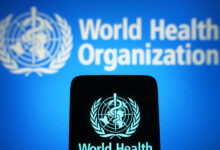
At least two Americans were hospitalized from a rare and potentially lethal bacteria strain

FILE PHOTO: A petri plate containing multiple colonies of Gram-negative Burkholderia pseudomallei bacteria is seen in a CDC handout. © AP / CDC / Dr. Todd Parker / Audra Marsh
US health officials are sounding alarms over a dangerous bacteria strain recently detected in the country for the first time, warning it could cause serious illness after multiple people were sickened by the bug.
The Centers for Disease Control and Prevention (CDC) declared that it spotted the Burkholderia pseudomallei bacterium “for the first time in the environment in the continental United States” in a recent health alert, noting that the strain is responsible for the rare illness melioidosis – also known as Whitmore’s disease.
The bacteria “was identified through environmental sampling of soil and water in the Gulf Coast region of southern Mississippi during an investigation of two human melioidosis cases,” the agency continued, adding that while it had detected one case of the disease as early as July 2020, it only confirmed the local presence of the bacteria last month.
Though their cases were years apart, genomic sequencing revealed that the two melioidosis patients had been “infected by the same novel strain from the Western Hemisphere,” which was “distinct from previous known isolates,” the CDC said. Both wound up hospitalized with sepsis and pneumonia, but recovered following antibiotic treatments.


The bacteria is typically found in tropical and subtropical climates around the globe, including in Southeast Asia, Central and South America, the Caribbean and Australia. Though it can cause severe disease, the CDC noted that the risk of person-to-person transmission is “considered extremely low as there are few documented cases.”
A study conducted in 2016 by researchers at Oxford University estimated the pathogen killed up to 89,000 people during the previous year, and suggested it may be present in up to 79 countries, including 34 that had not previously detected it. At the time, the paper indicated a “complete absence” of the bacteria within the US.
In late 2014, the CDC confirmed the bacteria had leaked from one of its own labs in Louisiana after multiple research animals contracted melioidosis, at least four of which did not survive. The CDC later shut down the laboratory’s work on B. pseudomallei, saying it had found serious problems with its biosafety procedures.




